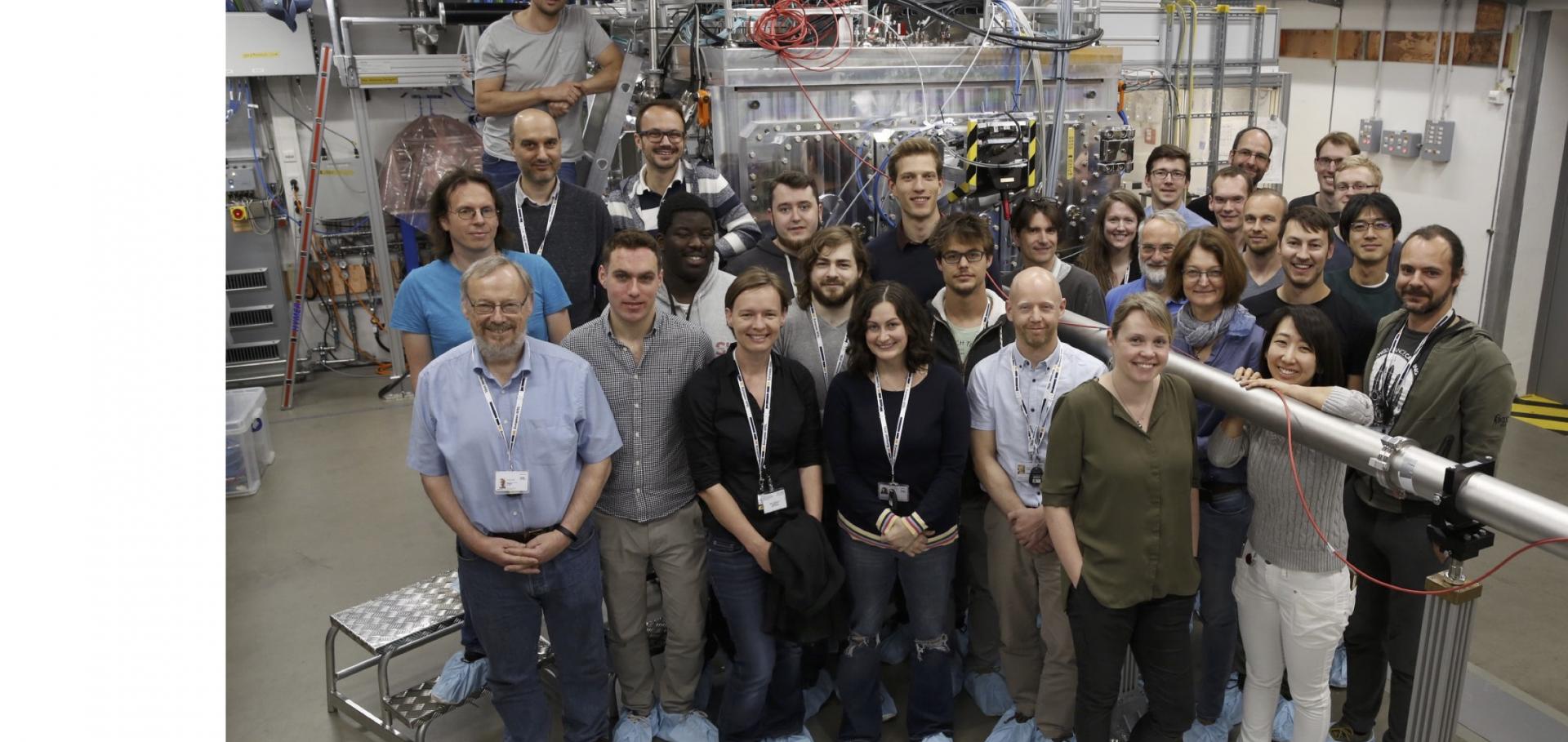Time-resolved X-ray diffraction study of the ferroelectric phase-transition in DKDP
CHEMICAL PHYSICS 299:2-3 (2004) 157-161
X-ray diffraction from shocked crystals: Experiments and predictions of molecular dynamics simulations
AIP CONF PROC 706 (2004) 1195-1198
Abstract:
When a crystal is subjected to shock compression beyond its Hugoniot Elastic Limit (HEL), the deformation it undergoes is composed of elastic and plastic strain components. In situ time-dependent X-ray diffraction, which allows direct measurement of lattice spacings, can be used to investigate such phenomena. This paper presents recent experimental results of X-ray diffraction from shocked fcc crystals. Comparison is made between experimental data and simulated X-ray diffraction using a post-processor to Molecular Dynamics (MD) simulations of shocked fcc crystals.Transient strain driven by a dense electron-hole plasma
Physical Review Letters 91 (2003) 165502 4pp
High-pressure, high-strain-rate lattice response of shocked materials
PHYS PLASMAS 10:5 (2003) 1569-1576
Abstract:
Laser-based shock experiments have been conducted in thin Si and Cu crystals at pressures above the published Hugoniot Elastic Limit (HEL) for these materials. In situ x-ray diffraction has been used to directly measure the response of the shocked lattice during shock loading. Static film and x-ray streak cameras recorded x rays diffracted from lattice planes both parallel and perpendicular to the shock direction. In addition, experiments were conducted using a wide-angle detector to record x rays diffracted from multiple lattice planes simultaneously. These data showed uniaxial compression of Si (100) along the shock direction and three-dimensional compression of Cu (100). In the case of the Si diffraction, there was a multiple wave structure observed. This is evaluated to determine whether there is a phase transition occurring on the time scale of the experiments, or the HEL is much higher than previously reported. Results of the measurements are presented. (C) 2003 American Institute of Physics.Multiple film plane diagnostic for shocked lattice measurements (invited)
REV SCI INSTRUM 74:3 (2003) 1929-1934


